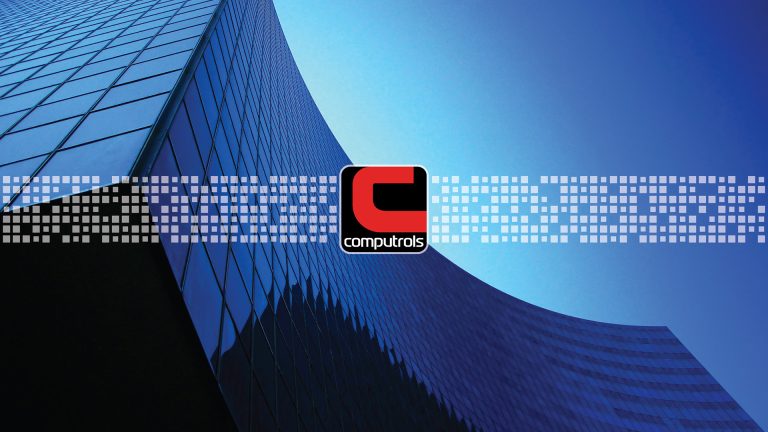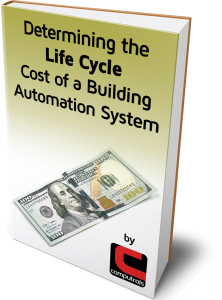Rather early in my career, I began working with destination dispatch elevator systems and have since had the opportunity to be engaged with a handful of these projects. Although I am far from an elevator expert, a fair number of my days as a technician were spent working on access control systems which were frequently correlated with destination dispatch.
What is Destination Dispatch?
Destination dispatch is a type of elevator system that is used to optimize elevator traffic. These systems use algorithms to assign elevator cabs based on user inputs. Now you are probably saying to yourself, “what exactly does that mean?” Before taking a deeper dive into this, lets first detail how elevator systems have functioned historically.

Traditional elevator systems typically have an up and down button in the elevator lobby. These buttons are used to signal the elevator system that a cab is needed and the direction it will be going. Once inside the cab, passengers let the system know their desired destination by pressing the button that is associated with that destination. The system then transports the passenger(s) to each destination that was selected. It is not uncommon to find access control card readers in the cabs of traditional elevator systems. These readers are used as a gate by only allowing personnel with the appropriate credentials access to secure destinations.
To break this down further, an elevator system reacts appropriately based on the inputs in which it receives. For traditional systems, if the down button is pressed in the elevator lobby, then the system will dispatch a cab that is headed down. The same is true in the opposite scenario. Furthermore, when a button is pressed inside of an elevator cab, the system reacts by sending the cab to the destination that is correlated with that button. In these applications all passengers that are headed in a given direction pile into the first cab that is available. Once inside, each passenger inputs their desired destination, and the system begins systematically reacting to the inputs that were provided. In this scenario, there is no vertical traffic optimization due to when the system received the destination information.
If destination data were available prior to a person entering the cab, then the system would have the data that it would need in order to optimize vertical traffic. This is precisely what destination dispatch does. Destination Dispatch moves the destination entry point outside of the elevator cab and optimally assigns elevator cabs based on destination.
To Turnstile or not to Turnstile
I have been engaged with two types of destination dispatch systems, those with turnstiles and those without. Let’s start with the more basic of the two, those systems without turnstiles. In these applications, there is free access to elevator cabs meaning there is no gate or turnstile preventing access to the cabs. Elevator cabs are modernized to eliminate all buttons and these buttons are now located in the elevator lobby replacing the traditional up/down buttons. In these applications, personnel seeking to travel vertically within a building use a kiosk in the elevator lobby to let the system know their desired destination. Based on the input, the system assigns an elevator cab which is displayed on the same kiosk. On the back end, the system runs computer algorithms in real-time to assign cabs based on common and similar destinations. Similar to traditional systems, access control is an optional feature that is available at these kiosks in order to restrict access to certain destinations based on credentials.
In applications where turnstiles restrict access to elevator cabs, some sort of credential is typically needed in order to gain entry through the turnstile. As a result of this added layer of security, the system architecture as previously described changes. I believe this to be the optimal architecture for destination dispatch systems. In these applications, the same credential that is used to gain entry through the turnstile is used to assign an elevator cab. The cab designation is displayed on a monitor that is typically integrated with the turnstile. The cab designation can also be given via audio for those with ADA needs. Furthermore, there are a number of ways for visitor management to be integrated. As with the non-turnstile architecture, the system runs computer algorithms in real time to assign cabs based on common and similar destinations. For building occupants that report to the same destination every day, this destination is associated with that person’s access credential. For those that do not report to the same destination regularly or choose to alter their destination, a kiosk is available once entry has been gained through the turnstile(s).
Single-Tenant vs. Multi-Tenant Buildings
I have found that destination dispatch systems work extremely well in multi-tenant commercial high rise buildings. It should be known that my only experience with these systems has been in the commercial real estate space. Although I have seen and heard of these systems deployed in high-rise hotels, I have yet to be involved with a project of this type. In addition to having been engaged with numerous projects in the multi-tenant commercial real estate space, I have also been engaged with multiple projects in the single-tenant commercial real estate space. It has been my experience that destination dispatch systems are not ideal for these environments. Typically when a building is occupied by a single tenant, there is a desire for free access once someone has made it through a common entry point. In the most extreme scenario, I have seen where a commercial building retrofitted a destination dispatch system back to a traditional system when the property became occupied by a single-tenant.
Want to learn more?
Known throughout the intelligent buildings industry as a master systems integrator, Computrols was selected as one of the first access control manufacturers to integrate to these new vertical transportation systems. Computrols has successfully deployed it’s destination dispatch access control solution in a number of prominent commercial office facilities. Furthermore, Computrols has deployed this solution with multiple elevator manufacturers. If you would like to learn more about how Computrols can help you implement an efficient destination dispatch system, call us at 504-529-1413 or email us at sales@computrols.com.




